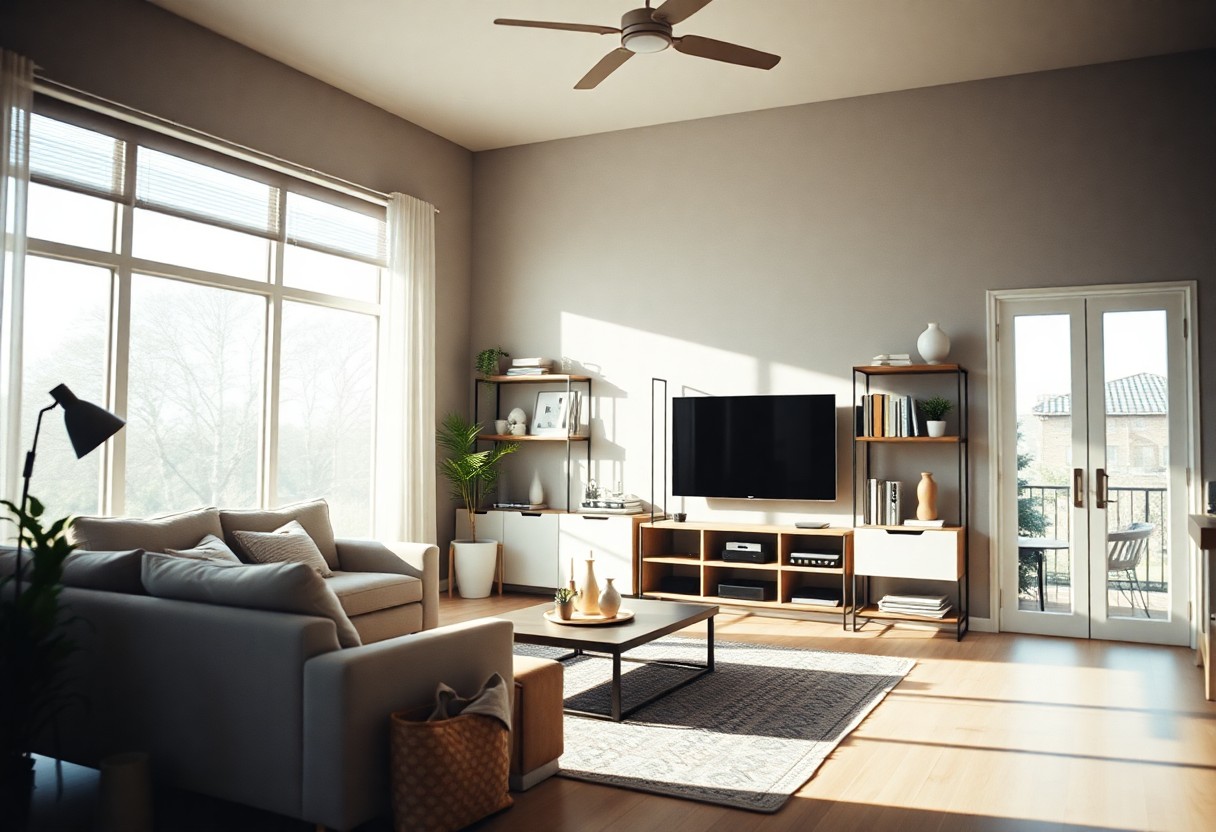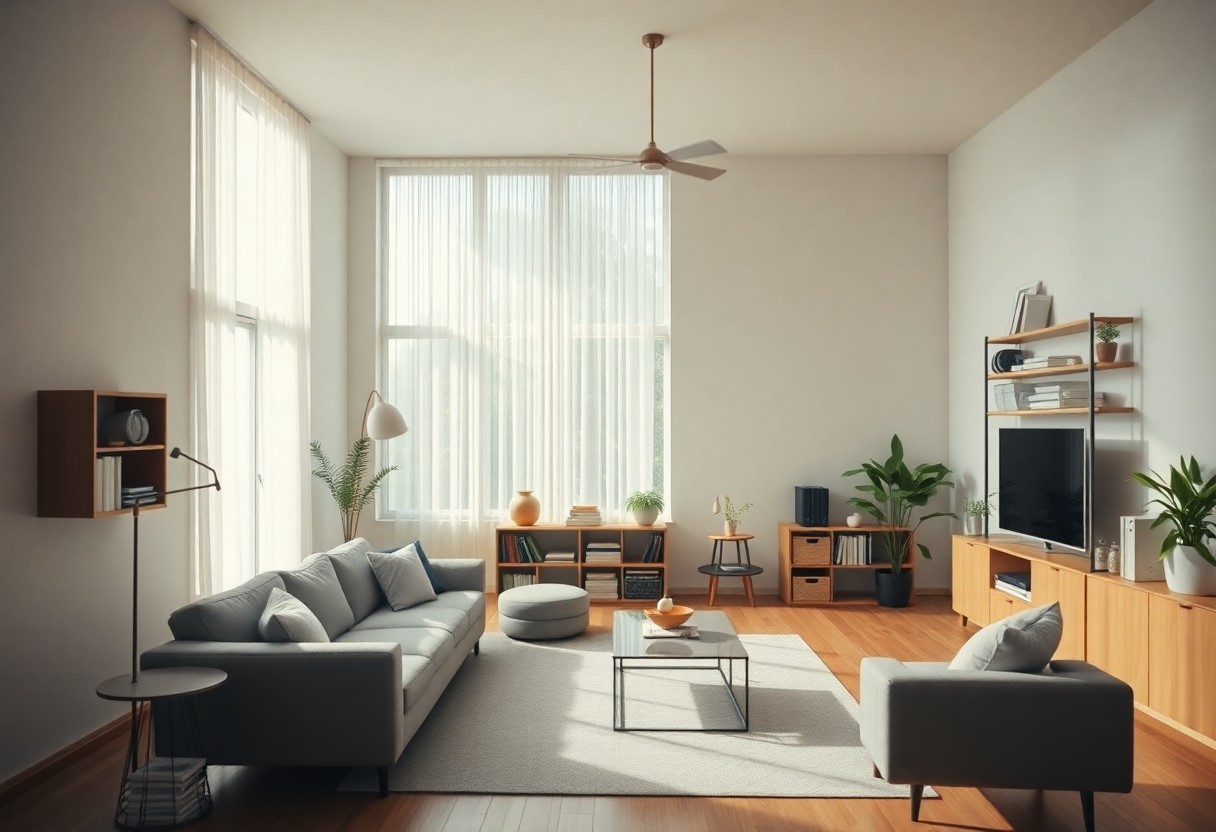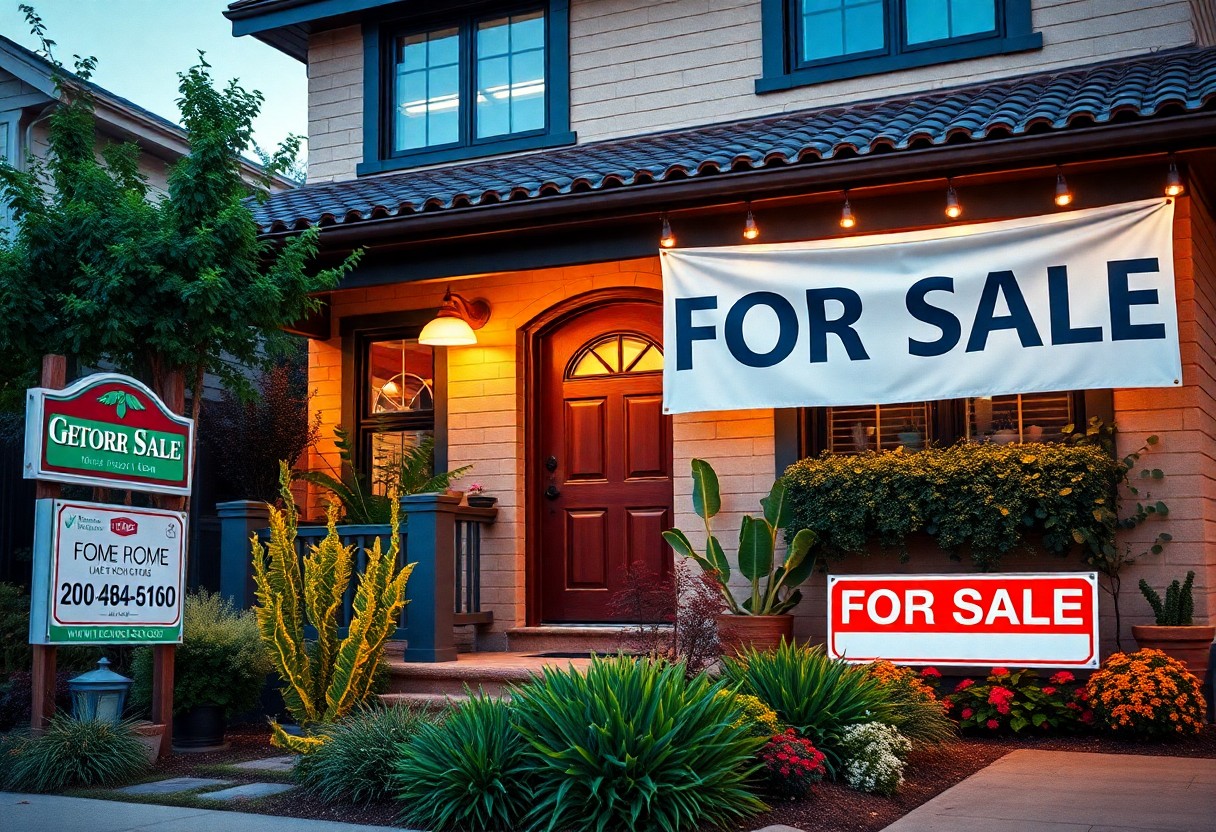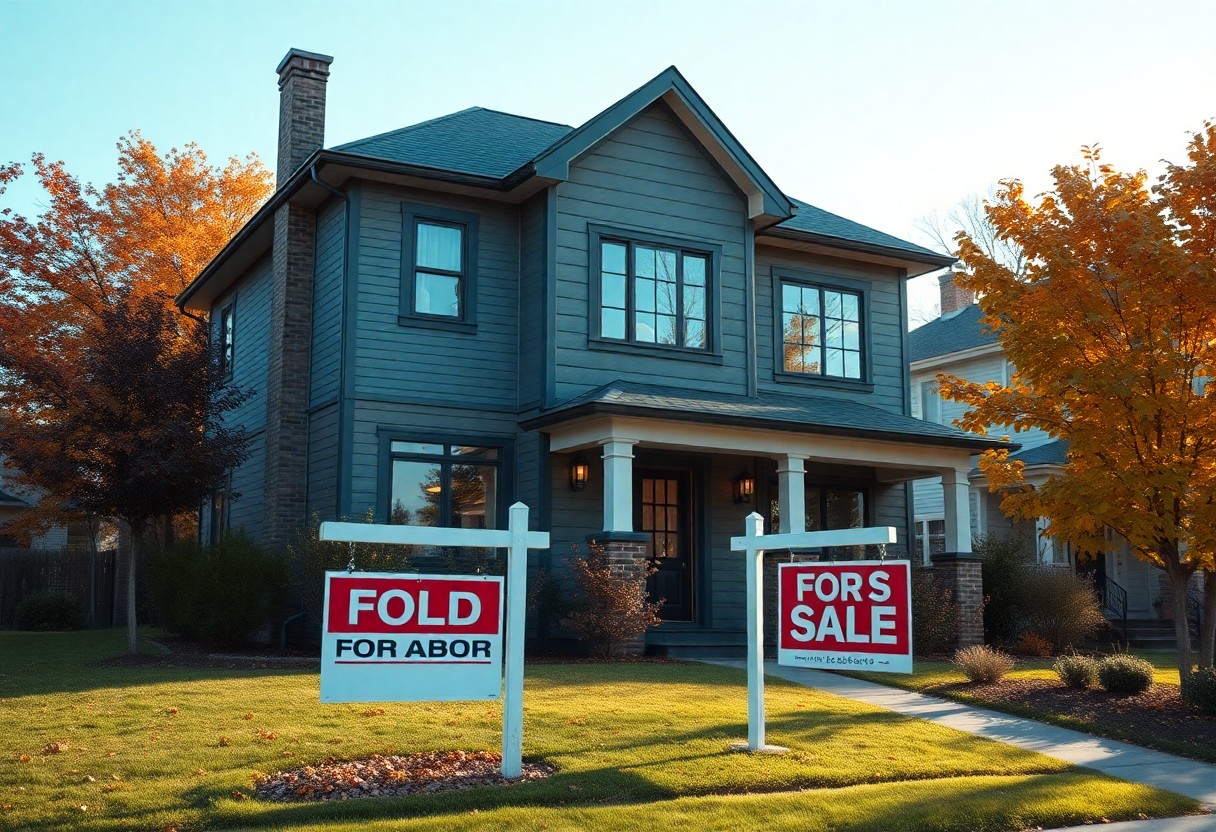Many homeowners underestimate the impact that decluttering and staging can have on selling their property for a higher price. By effectively showcasing your home, you create a welcoming atmosphere that attracts potential buyers and highlights its best features. In this guide, you will learn practical strategies to transform your space, making it irresistible to prospective purchasers. From eliminating excess clutter to thoughtfully arranging furniture, you’ll discover how these small adjustments can lead to significant financial gains when it’s time to sell your house.

Key Takeaways:
- Decluttering helps potential buyers envision themselves in the space, making it feel more inviting and manageable.
- Staging your home with appropriate furnishings and decorations can highlight its best features, creating a positive first impression.
- Both decluttering and staging can increase your home’s market value, leading to higher offers and quicker sales.
Understanding Decluttering
Your journey to a successful home sale begins with understanding the importance of decluttering. This process not only enhances your home’s visual appeal but also allows potential buyers to envision their lives within the space. By removing excess belongings, you create an environment that feels more open and inviting, which can ultimately lead to a higher selling price. Decluttering can vary in approach and technique, making it necessary to find a method that works well for you.
Types of Decluttering
There’s a variety of decluttering techniques that you can choose from to suit your needs and personal style. Below is a breakdown of some popular methods:
| Method | Description |
| Four-Box Method | Sort items into boxes labeled keep, donate, discard, and sell. |
| One-Day Declutter | Set aside a day to tackle a specific area of your home. |
| Marie Kondo Method | Keep only items that “spark joy” and thank those you let go. |
| Room-by-Room | Focus on decluttering one room at a time for thoroughness. |
| Seasonal Decluttering | Regularly assess and reduce items based on seasonal use. |
The right approach can make your decluttering process more effective and enjoyable, setting the stage for a successful home sale.
Factors to Consider When Decluttering
Any successful decluttering effort requires careful attention to several factors. Taking the time to consider the emotional and practical aspects of what to keep and what to let go will ultimately determine the impact of your efforts. Key factors to think about include the following:
- Your emotional attachment to the items.
- The overall aesthetic and function that you want your home to convey.
- Time constraints in preparing your home for sale.
- The potential value of items you plan to sell.
- Perceiving how the space feels with fewer items.
You should also think about the way each item contributes to your home’s overall appeal. Clarifying your intentions can help you make decisions with confidence. Ask yourself questions like whether the item complements your home’s style or if it adds to the clutter.
- The emotional significance of objects to potential buyers.
- Functionality and ease of access within the space.
- Avoiding overcrowded visuals when staging your home.
- Financial implications of selling unwanted items.
- Perceiving how decluttering can elevate your home’s marketability.
Types of items that usually require careful consideration include furniture, personal belongings, and decorations. Each piece adds to or detracts from the potential allure of your home. By focusing on your space’s overall appeal and what resonates with buyers, you increase the chances of selling your house for a more attractive price.
1. Clear out all personal items and clutter.
2. Deep clean your home for a fresh appearance.
3. Repair minor issues like holes and leaky faucets.
4. Utilize neutral colors to appeal to buyers.
5. Arrange furniture to enhance space and flow.
6. Add inviting touches like flowers and soft lighting.

The Importance of Staging
Some homeowners underestimate the power of staging when it comes to selling their house for more money. Staging helps to create an inviting atmosphere that allows potential buyers to visualize themselves in the space. A well-staged home not only highlights its best features but also minimizes distractions, making it easier for buyers to imagine their lives unfolding within those walls. It’s more than just arranging furniture; it’s about crafting a narrative that resonates with your target audience.
Types of Staging
Clearly, there are several approaches to staging that can enhance your home’s appeal. Each method serves a different purpose based on your property’s condition, location, and market competitiveness. The following table outlines some popular types of staging:
| Type of Staging | Description |
| Traditional Staging | Uses furniture and decor to highlight the home’s features. |
| Vacant Home Staging | Involves renting furniture and decor for empty homes. |
| Occupied Home Staging | Involves decluttering and rearranging existing furniture. |
| Virtual Staging | Utilizes digital technology to stage homes virtually. |
| Outdoor Staging | Enhances curb appeal and outdoor living spaces. |
This method of increasing your home’s marketability can be incredibly effective in attracting buyers and ultimately securing a better sale price.
Tips for Effective Staging
On your journey to effectively stage your home, consider these actionable tips that can greatly enhance your property’s presentation. Focus on creating a fresh, welcoming atmosphere that appeals to a wide array of potential buyers. To achieve this, make adjustments that go beyond mere furniture arrangement. Here are some strategies you can use:
- Clean every corner and detail of your home; cleanliness can create an impression of upkeep.
- Depersonalize your space by removing family photos and personal items.
- Stick to neutral color palettes for walls and decor to appeal to broader tastes.
- Highlight focal points of each room, such as fireplaces or large windows, by using strategic furniture placement.
- Ensure all spaces are well-lit, as bright rooms feel more inviting and spacious.
Assume that by implementing these tips, you’ll create a welcoming environment that resonates with buyers and encourages them to see the potential of your home.
Staging doesn’t have to be overwhelming. You can enhance your home’s allure with simple yet effective strategies. Additionally, investing in minor repairs like patching walls or replacing doorknobs can elevate your home’s overall impression. Here are further actions to consider:
- Arrange furniture to create inviting conversation areas.
- Avoid overcrowding rooms with too many pieces; less is often more.
- Add indoor plants or fresh flowers to bring life into the space.
- Employ mirrors strategically to create a sense of depth and space.
- Use area rugs to define spaces, especially in open floor plans.
Assume that these staging efforts will set the tone for your home, making it irresistibly appealing to potential buyers.
Step-by-Step Guide to Decluttering and Staging
To maximize your home’s selling potential, implementing a strategic approach to decluttering and staging is important. Start by familiarizing yourself with The Power of Decluttering: Staging Your Home to Sell. This resource can guide you through the process, making it less overwhelming. Below is a step-by-step guide to make your home more appealing to prospective buyers.
| Step 1: Preparing Your Home | The initial step involves evaluating your home and making a to-do list of areas that need attention. Gathering sorting supplies like bins and boxes will help you efficiently sort through items. |
| Step 2: Implementing Decluttering Techniques | Turn your decluttering efforts into a methodical process. Use techniques like the “Four-Box Method” or the “Marie Kondo Method” to keep only the items that spark joy or serve a purpose. |
| Step 3: Staging Your Home for Buyers | Staging is about creating a welcoming environment that allows potential buyers to envision themselves in your space. Arrange furniture to create an open flow and utilize neutral colors to enhance appeal. |
Step 1: Preparing Your Home
To kick off the decluttering process, you should first assess each room in your home critically. This means identifying items that are important, sentimental, or rarely used. Creating an organized plan is vital; lay out what each room needs in terms of decluttering. Start with the most cluttered areas, aiming to create a streamlined space that not only feels good but looks inviting to buyers.
Next, gather the necessary supplies to aid you in your decluttering journey. Storage bins, trash bags, and donation boxes can be your best friends in this process. Ensure that you allocate time each day to tackle specific areas. Breaking the work down into manageable segments will help you maintain focus and achieve a satisfying sense of progress as you go through your belongings.
Step 2: Implementing Decluttering Techniques
To effectively declutter your home, consider utilizing proven techniques tailored to streamline the process. One popular method is the “Four-Box Method,” where you label boxes for items to keep, donate, sell, or trash. By having a planned approach, your decision-making will be quicker, allowing you to maintain momentum. You might also try the “Marie Kondo Method,” which encourages you to keep only those items that evoke joy, which can be a substantial motivator for parting with excess belongings.
This technique not only promotes a tidier living space but also allows prospective buyers to visualize their own lives in a decluttered environment. A well-organized home creates an impression of ease and comfort, inviting buyers to imagine a life without clutter interrupting their daily routines.
Step 3: Staging Your Home for Buyers
On completing the decluttering phase, staging your home becomes the next significant step. This process involves rearranging and decorating your spaces to enhance their appeal. A few tactical strategies include removing excess furniture, using neutral colors for painting, and adding fresh flowers or greenery to brighten up the rooms. These simple touches can evoke a welcoming and attractive atmosphere that encourages buyers to connect emotionally with your home.
Your staging strategy should focus on displaying your home’s best features while creating an inviting ambiance that buyers can envision themselves in. Clean both the exterior and interior thoroughly, and consider minor renovations if necessary. With thoughtful staging, you will amplify your home’s visual impact and increase your chances of selling for a higher price.
Pros and Cons of Decluttering and Staging
All homeowners looking to sell their property should weigh the advantages and disadvantages of decluttering and staging. By understanding both sides, you can make informed decisions that may result in a quicker sale and a better price. Here’s a breakdown of the pros and cons:
| Pros | Cons |
|---|---|
| Increases the perceived value of your home | Can involve upfront costs for staging |
| Creates a more inviting atmosphere for potential buyers | May require time and effort to declutter and stage |
| Helps buyers visualize themselves in the space | Staging might not align with every buyer’s tastes |
| Enhances curb appeal | Can be emotional to part with personal belongings |
| Improves online listings with better photography | High demand for professional staging services can lead to availability issues |
| Reduces clutter that can distract buyers | May induce decision fatigue if there are too many changes |
Pros of Decluttering
Staging your home begins with decluttering, an important step that supports the overall goal of appealing to buyers. When you eliminate excess belongings, you create a sense of space and openness that makes your home feel larger and more inviting. Potential buyers are often drawn to homes that appear well-organized and well-maintained.
Additionally, decluttering helps highlight your home’s best features, such as architectural details and natural light. By making these aspects stand out, you not only enhance the visual appeal but also invite potential buyers to imagine their life in the space. Ultimately, an organized home can lead to quicker offers and potentially higher selling prices.
Cons of Staging
Staging your home can require both financial and time investments that may not yield a return if the market does not respond as expected. You may find yourself spending money on furniture rentals, decor items, or professional services, which can add up quickly. On top of the costs, staging often requires you to take time out of your busy schedule to organize and set up the space appropriately.
Additionally, while staging aims to create an appealing environment, it may not resonate with all potential buyers. Individual tastes vary, and what appeals to one buyer might not appeal to another, leading to frustration if the house does not attract sufficient interest. It’s also important to note that some people can find the process of staging overwhelming or exhausting, especially if they have to part with furniture or personal items they’ve grown attached to.
Decluttering can be a challenging task as it often involves making difficult decisions about personal items that hold sentimental value. Striking a balance between creating a space for buyers and keeping your personal touch can feel daunting. However, viewing decluttering as a fresh start can help you navigate this challenge more easily and has the potential to positively impact your home-selling experience.
Conclusion
Hence, selling your house for more money often hinges on how well you present your space to potential buyers. By committing to decluttering, you create an environment that highlights your home’s best features, allowing buyers to envision themselves living there. This effort can lead to increased interest and, ultimately, offers that reflect the true value of your property. Staging plays a pivotal role in this process, as it gives your home a polished appearance that attracts a wider pool of prospective buyers and encourages higher bids.
Moreover, don’t overlook the small details that can enhance your property’s appeal. Simple improvements, such as fresh paint or minor repairs, combined with a strategic staging plan, can significantly impact your selling price. You have the power to create a space that resonates with buyers and showcases the full potential of your home. Following the steps outlined in this guide will empower you to make informed decisions that elevate your selling strategy, positioning your home to attract competitive offers and ensure a profitable sale.
FAQ
Q: How does decluttering help in selling my house for more money?
A: Decluttering your home creates a more inviting and spacious environment, which can significantly enhance its appeal to potential buyers. When your home is free of excess items, buyers can easily visualize themselves living there. A tidy space also highlights the property’s features, such as natural light and room size, ultimately making it more attractive. Additionally, a clutter-free home may suggest to buyers that the property has been well-maintained, influencing their perception of value and potentially leading to higher offers.
Q: What is staging, and how can it increase the selling price of my home?
A: Staging involves arranging furniture and decor in a way that showcases your home’s best attributes, enhancing its overall aesthetic. By creating an appealing atmosphere, staging can evoke emotional responses from buyers and encourage them to envision their life in the space. Well-staged homes often sell faster and at higher prices because they create a memorable first impression. Professional stagers have an eye for design and can transform a home to maximize its selling potential, making it a worthwhile investment for many sellers.
Q: Do I need to hire professionals for decluttering and staging, or can I do it myself?
A: While you can certainly declutter and stage your home on your own, hiring professionals can provide expert insights and experience that might be beneficial. Professionals can offer a fresh perspective on what items should stay or go, as well as workable design strategies. However, if you’re on a budget or enjoy the process of arranging and organizing, taking the DIY route can also be effective. The key is to focus on creating an inviting atmosphere that appeals to the widest range of potential buyers, regardless of whether you seek assistance.



